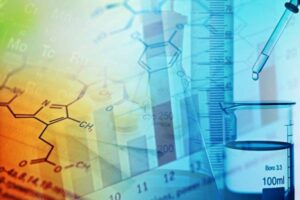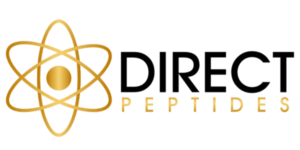
GHK-Cu Capsules: Copper Peptides For Skin
GHK-Cu Capsules: Copper Peptides For Skin In an ever-evolving world of beauty standards, the quest for vibrant, healthy skin remains
Peptide therapy is an exciting new frontier in medical science, showing great promise for treating a wide range of diseases with precision and minimal side effects. Peptides, which are short strings of amino acids, are naturally occurring molecules that play important roles in our bodies. By harnessing their therapeutic potential, we can work with the body’s natural processes to improve health.
In this context, two noteworthy peptides, PTD-DBM and GHK-Cu, have been attracting increasing attention. PTD-DBM, a cell-penetrating peptide, exhibits potential in combating neurodegenerative diseases and cancer by inhibiting cell-death pathways, while GHK-Cu, or Copper tripeptide, is renowned for its anti-ageing, wound healing and anti-inflammatory properties. The synergistic application of these peptides represents an exciting frontier in peptide therapy, a subject which this paper aims to delve into in further detail.
Peptide stack PTD-DBM and GHK-Cu is available to buy online from Direct Peptides Saudia Arabia, a trusted supplier of premium grade peptides worldwide.
PTD-DBM, also known as Protein Transduction Domain – Direct Binding Motif, is a special cell-penetrating peptide that can cross the cell membrane. This unique peptide was found through a series of peptide screenings. It has opened doors for new therapeutic strategies, especially when delivering drugs to the inside of cells is difficult.
Buy PTD-DBM peptides from Direct Peptides Saudia Arabia, available in vials, pre-mixed pens and nasals.
The functionality of PTD-DBM primarily revolves around its intracellular penetration abilities. Notably, PTD-DBM has the capacity to bind directly to its target proteins within the cell, inhibiting their interaction with other proteins or molecules. This inhibition disrupts the pathological processes that can lead to adverse cellular events, offering potential therapeutic benefits.
PTD-DBM in peptide therapy has garnered significant attention for its potential in slowing down the progression of neurodegenerative diseases and cancer. It works by inhibiting cell-death pathways, which could have a significant impact on treating diseases related to uncontrolled cell growth and premature cell death. When combined with other peptides like GHK-Cu, the therapeutic effectiveness of PTD-DBM is further improved, opening up new possibilities in modern peptide therapy.
GHK-Cu (Glycyl-L-Histidyl-L-Lysine-Copper) is a naturally occurring copper complex that has been increasingly recognised for its wide range of biological effects. It is a tripeptide, meaning it is composed of three amino acids, with a copper ion attached — a structure that contributes to its unique therapeutic properties. GHK-Cu is not only essential for wound healing and tissue repair, but it is also an effective anti-inflammatory compound, demonstrating its versatility in addressing various health issues. The peptide is also renowned for its anti-ageing effects, particularly in skin care, where it can stimulate collagen production to reduce wrinkles and improve skin elasticity.
GHK-Cu Peptides for sale online from Direct Peptides Saudia Arabia, available in vials, nasals and pre-mixed pens to provide flexibility in your research.
GHK-Cu plays a versatile and potent role in peptide therapy. Its regenerative properties are widely used in treatments for wound healing and skin repair. Additionally, it acts as an effective therapeutic agent for chronic inflammation and age-related diseases due to its anti-inflammatory and antioxidant actions. The peptide’s ability to enhance cell proliferation and migration, along with its anti-ageing properties, opens up potential applications in regenerative medicine and cosmetic dermatology. An exciting development in peptide therapy is the potential synergistic action of GHK-Cu with other peptides, such as PTD-DBM. The combination of GHK-Cu’s regenerative properties and PTD-DBM’s inhibition of cell-death pathways could lead to significant advancements in treating a wide range of diseases.
Understanding the synergistic relationship between PTD-DBM and GHK-Cu necessitates a deep dive into their combined therapeutic mechanisms. This approach implies a collaborative effort, where the unique properties of one peptide amplify the effects of the other, resulting in an enhanced therapeutic impact.
When utilised together, PTD-DBM and GHK-Cu Saudia Arabia research suggests they exhibit a synergistic relationship. They each have distinct and complementary mechanisms of action:
The interplay between these peptides’ mechanisms leads to an enhanced outcome, offering potential for novel therapeutic strategies in disease treatment and prevention.
The synergy between PTD-DBM and GHK-Cu not only enhances their individual therapeutic potentials but also presents a formidable weapon in combating a spectrum of diseases:
In summary, the synergistic approach of PTD-DBM and GHK-Cu offers a promising avenue in the field of peptide therapy, capable of tackling a wide array of health conditions with increased efficacy.
An emerging body of evidence substantiates the synergistic association between PTD-DBM and GHK-Cu. Numerous Saudia Arabia research studies have yielded findings that emphasize this synergism, showcasing the potential advantages for peptide therapy.
A key study examined the combined use of PTD-DBM and GHK-Cu in the treatment of neurodegenerative diseases. The results showed an enhanced reduction in neural cell death rates, suggesting the combined therapy’s potential in mitigating neurodegeneration.
Another Saudia Arabia research study investigated the synergistic action of PTD-DBM and GHK-Cu in wound healing. The study demonstrated that wounds treated with the combination of these peptides healed at a significantly faster rate compared to those treated with either peptide individually.
The findings from these Saudia Arabia studies provide invaluable insights into the combined therapeutic potential of PTD-DBM and GHK-Cu.
The studies indicate an increased therapeutic efficacy when PTD-DBM and GHK-Cu are used in tandem. This could revolutionise treatment strategies in the fields where these peptides find application, ranging from neurodegenerative disease treatment to wound care.
The diverse impact of the synergistic relationship between PTD-DBM and GHK-Cu suggests the potential for a broad spectrum of disease management. This might lead to novel therapeutic strategies that can be tailored to individual patient needs.
The combined action of PTD-DBM and GHK-Cu could potentially enhance anti-ageing treatments. This could redefine approaches to combat age-related degenerative changes, including skin ageing.
In conclusion, the synergy between PTD-DBM and GHK-Cu highlighted in these studies underscores the potential of this combination in peptide therapy. This approach could lead to the development of more effective, versatile, and personalised therapies in the future.
As we move towards a more personalised and precision-oriented healthcare system, the synergistic use of PTD-DBM and GHK-Cu could herald a new era in peptide therapy. The combined action of these peptides, as revealed through numerous studies, offers a platform for advancing both preventive and therapeutic strategies in a diverse array of diseases. The wide-ranging cellular processes influenced by these peptides, from inhibiting cell-death pathways to promoting tissue regeneration, hold great potential for combating degenerative diseases, cancer, and age-related ailments. Future research may focus on optimising this synergy’s therapeutic potency, fine-tuning the administration protocols, and exploring potential applications in previously uncharted disease territories.
The promising findings from the synergistic approach of PTD-DBM and GHK-Cu illuminate the potential of peptide stacks in therapeutic treatments. As we continue to unravel the complexities of cellular processes and disease pathways, the use of strategic peptide combinations will likely become a cornerstone in future medical treatments. This approach, which harnesses the unique strengths of individual peptides and their collective synergy, could revolutionise patient care, providing more effective, personalised, and potentially less invasive treatment options. The exploration and development of peptide stacks stand as an exciting frontier in the ever-evolving landscape of therapeutic treatments.
[1] https://www.hindawi.com/journals/ omcl/2012/324832/
[2] https://pubmed.ncbi.nlm.nih.gov/20143136/
[3] https://pubmed.ncbi.nlm.nih.gov/31658546/
[4] https://pubmed.ncbi.nlm.nih.gov/22797470/
Check out the full range of peptide stacks from Direct Peptides today!

GHK-Cu Capsules: Copper Peptides For Skin In an ever-evolving world of beauty standards, the quest for vibrant, healthy skin remains

Explore the anti-aging effects of Epithalon And Thymalin Stack The pursuit of longevity and delaying the signs of aging is

What Is NAD+? Discover The Key Molecule in Human Physiology Hidden in cellular metabolism is a modest molecule that greatly

Exploring the Benefits of Vasoactive Intestinal Peptide (VIP) The quest for cutting-edge medical treatments is an ongoing saga, and in

401 N. Mills Ave, Ste B, Orlando, FL 32803, United States
